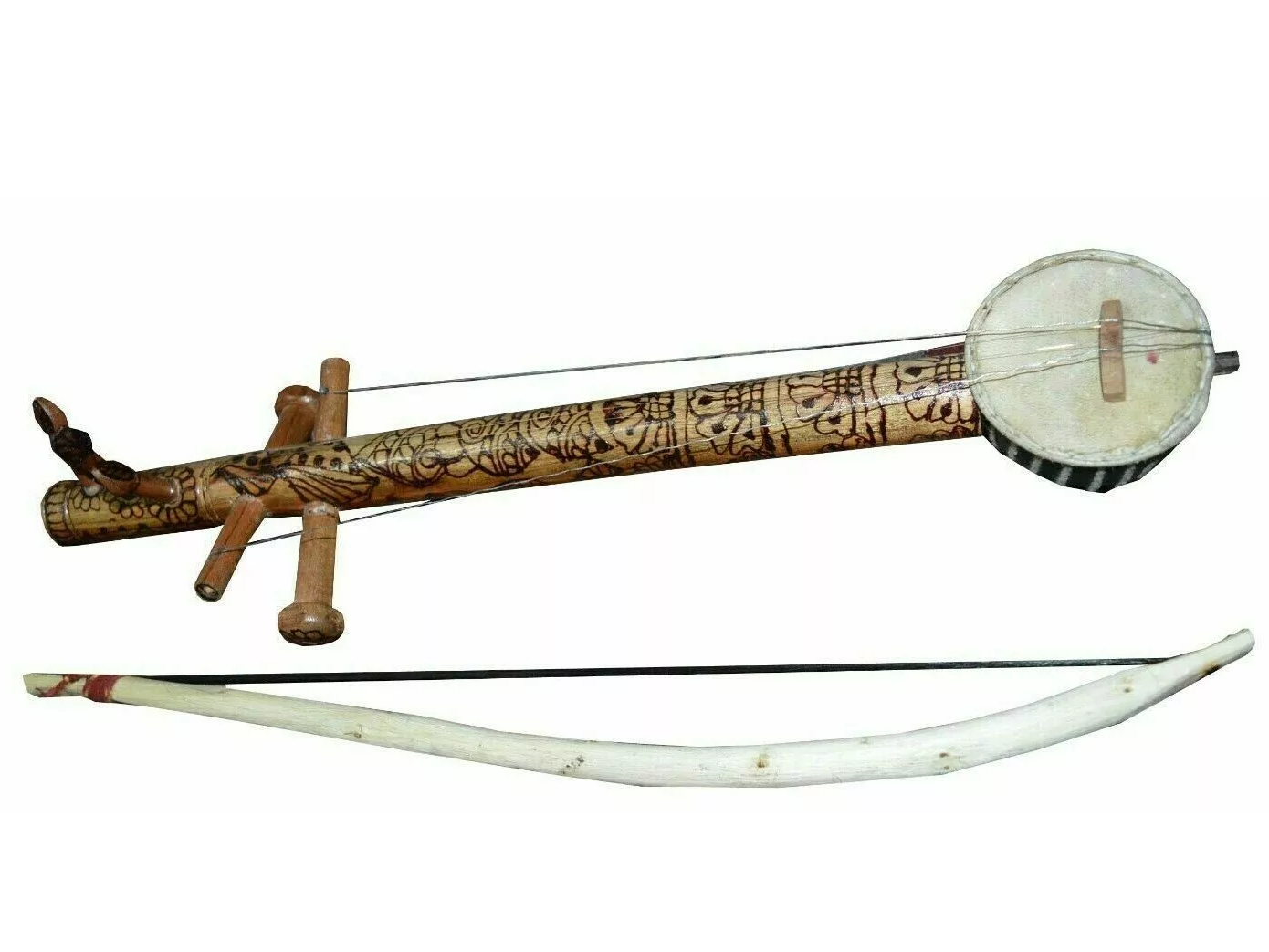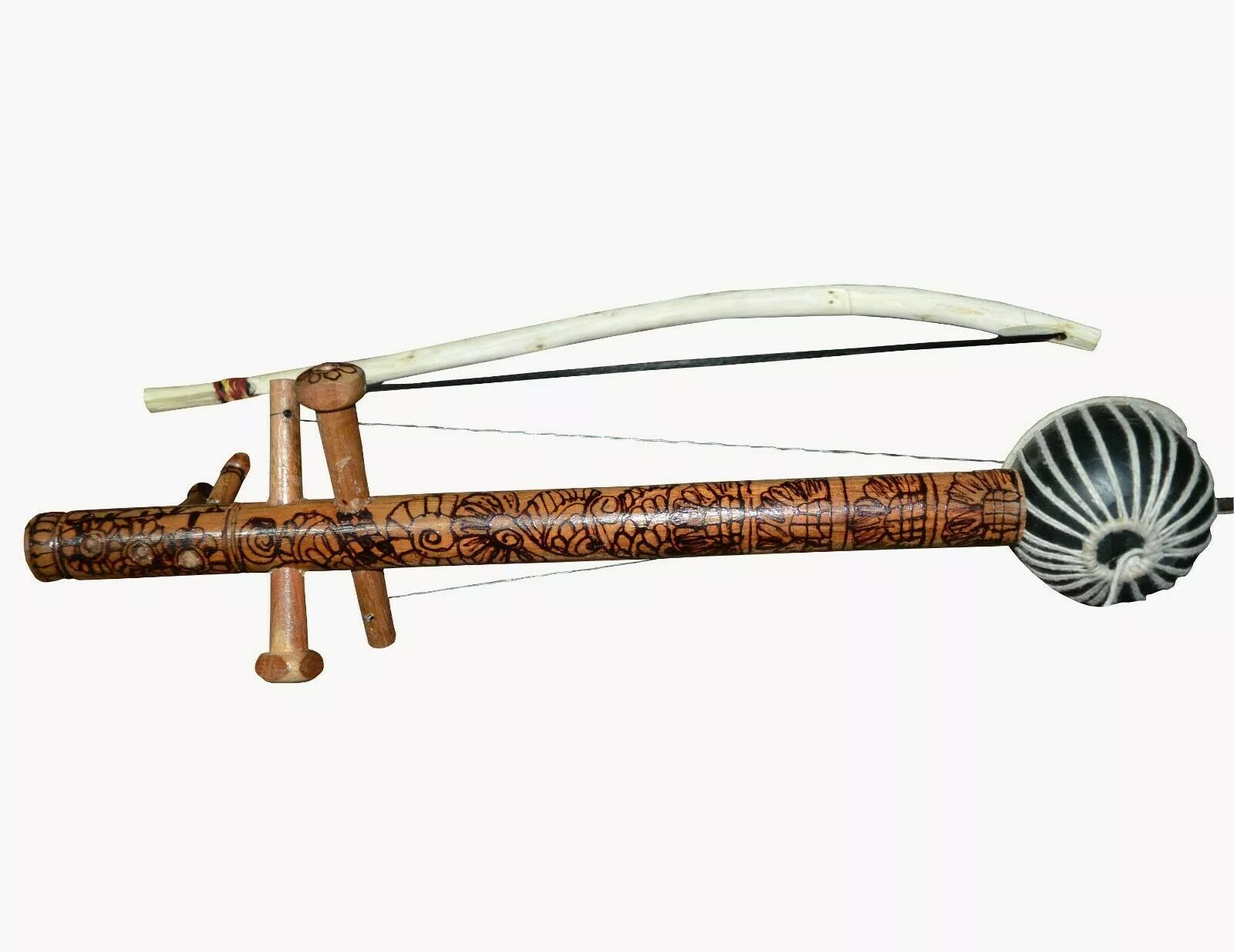Ravanahatha
Bowed Instruments
Asia
Between 0 and 1000 AD
Video
The Ravanahatha, a traditional string instrument, holds a significant place in the cultural heritage of India, particularly in the regions of Rajasthan and Gujarat. Known for its unique sound and historical roots, this instrument is often regarded as a precursor to the modern violin.
History of the Ravanahatha
The origins of the Ravanahatha can be traced back to the Hela civilization of Sri Lanka around 2500 BCE. According to legend, it was created by Ravana, the demon king from the Hindu epic Ramayana. Ravana was a devout follower of Lord Shiva and is said to have played this instrument to express his devotion. After the legendary battle between Rama and Ravana, Hanuman is believed to have brought the Ravanahatha to North India, where it became an integral part of the local music scene.
The name “Ravanahatha” literally translates to “Ravana’s hand,” reflecting its mythological connections. Throughout history, this instrument gained popularity among musicians in Rajasthan and Gujarat, especially during medieval times when royal patronage helped elevate its status. It was often one of the first instruments learned by princes in these regions.
The Ravanahatha’s design and playing technique have influenced various string instruments across continents, contributing to its recognition as a precursor to the violin.
Construction and Working Mechanism
The Ravanahatha is primarily made from locally sourced materials such as bamboo, coconut shells, goat hide, and horsehair. Its construction typically features a long bamboo stem (Dandi) measuring around 80-90 cm with a halved coconut shell attached at one end. The coconut shell acts as a resonator and is covered with goat hide to enhance sound quality.
The instrument usually has one to four strings made from gut or steel, which are tuned using pegs attached along the neck. The bow used for playing is made from horsehair and often includes jingle bells that add rhythm to the melodies produced.
The method of playing involves drawing the bow across the strings similar to how one would play a violin, allowing for a range of musical expressions from dance tunes to meditative melodies.
Types of Ravanahatha
There are several variations of the Ravanahatha based on regional styles and personal adaptations by musicians:
Traditional Ravanahatha: This version retains the classic construction materials and techniques.
Modern Adaptations: Some contemporary musicians experiment with different materials while maintaining the core design principles.
Regional Variants: Different communities may have their unique styles influenced by local traditions.
Musical Significance
The music produced by the Ravanahatha is deeply rooted in folk traditions. Unlike classical Indian ragas typically performed on instruments like the sitar or sarod, the Ravanahatha is associated with lively dance melodies and spiritual songs. Its sound captures the essence of Rajasthan’s nomadic culture, resonating with themes of love, devotion, and nature.
Cultural Impact
In recent years, there has been a resurgence of interest in traditional instruments like the Ravanahatha. Musicians are increasingly incorporating it into modern compositions, bridging ancient sounds with contemporary music styles. Notable artists have begun using this instrument in their works, showcasing its versatility and rich tonal qualities. The Ravanahatha also holds cultural significance among specific communities in India. For instance, the Nath Bavas believe that Ravana gifted this instrument to their ancestors. They continue to play it during rituals and celebrations, emphasizing its role in spiritual practices
The Ravanahatha is more than just a musical instrument; it embodies centuries of tradition and cultural heritage. Its historical roots trace back to ancient Sri Lanka and have evolved through various influences over time. As both a symbol of artistic expression and a connection to folklore, it remains relevant in contemporary music scenes while preserving its historical essence. As interest grows in reviving traditional music forms, instruments like the Ravanahatha serve as vital links to our past. They remind us of our shared cultural narratives and inspire future generations to appreciate and continue these artistic traditions.
FAQ
What type of instrument is the Ravanahatha?
The Ravanahatha is a bowed string instrument that is one of the oldest known in India. It is traditionally associated with Rajasthan and Sri Lanka.
What materials are used to make the Ravanahatha's body?
The body of the Ravanahatha is made from a hollowed-out coconut shell or gourd, covered with goat skin. The neck is typically made from bamboo or wood.
What are the strings of the Ravanahatha made of?
The strings of the Ravanahatha are traditionally made from horsehair. Modern versions may also use steel or nylon strings for durability.
 Links
Links
References
Other Instrument
Categories



















